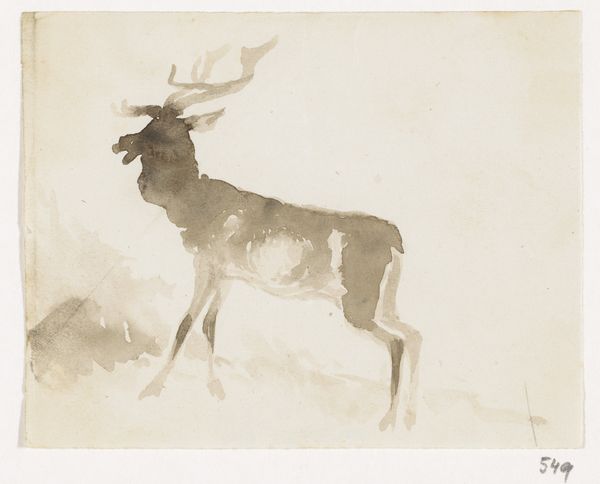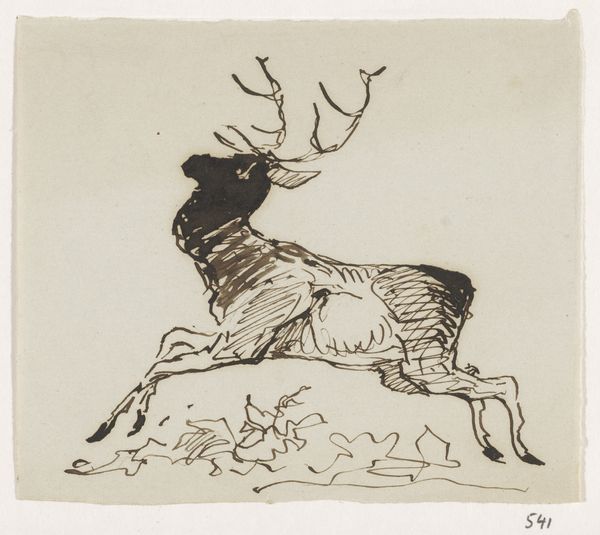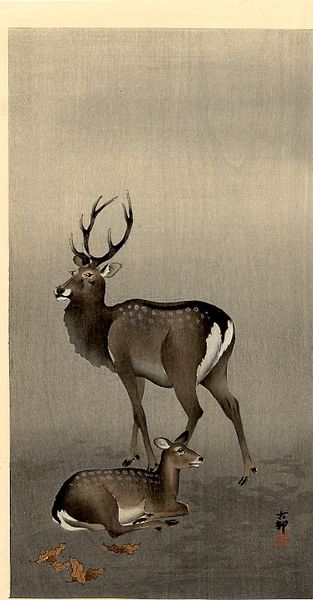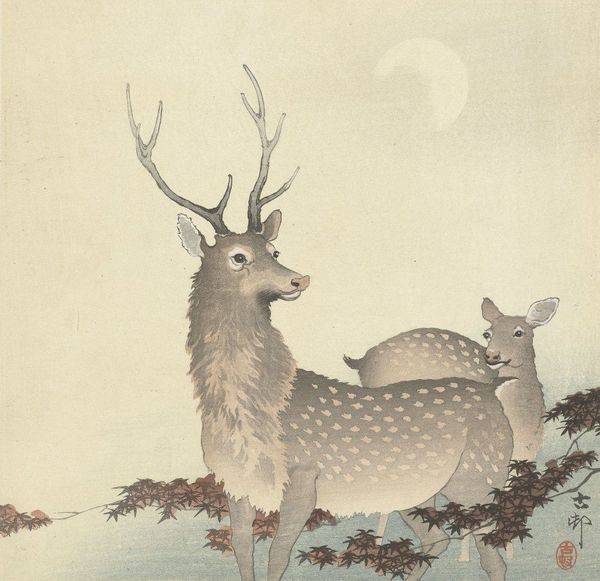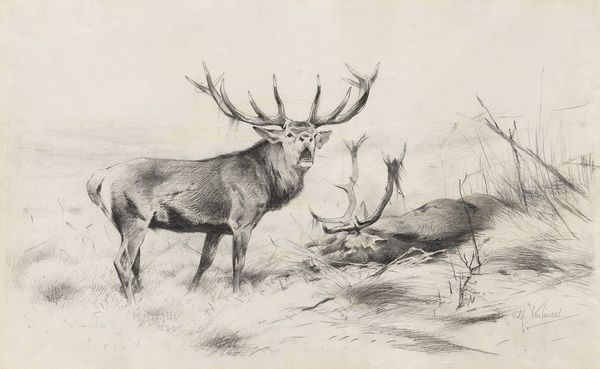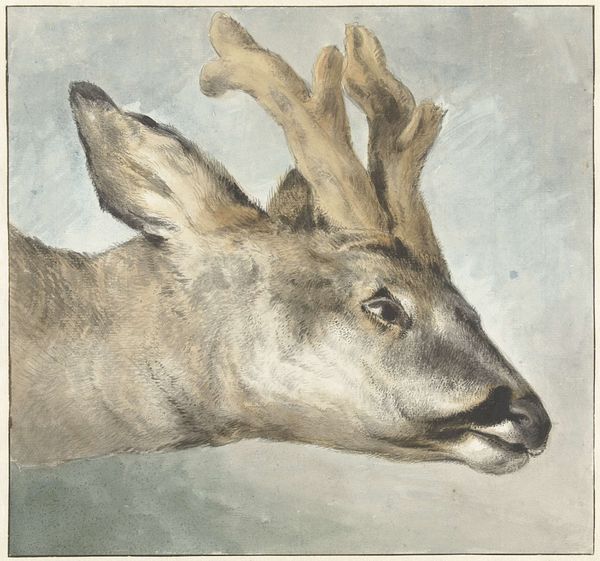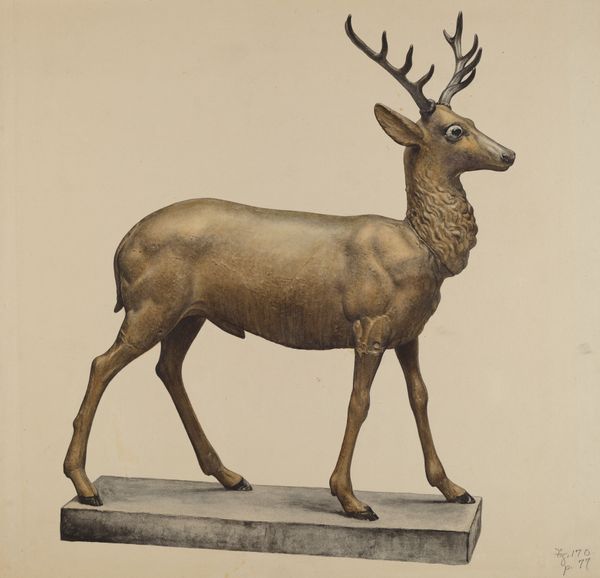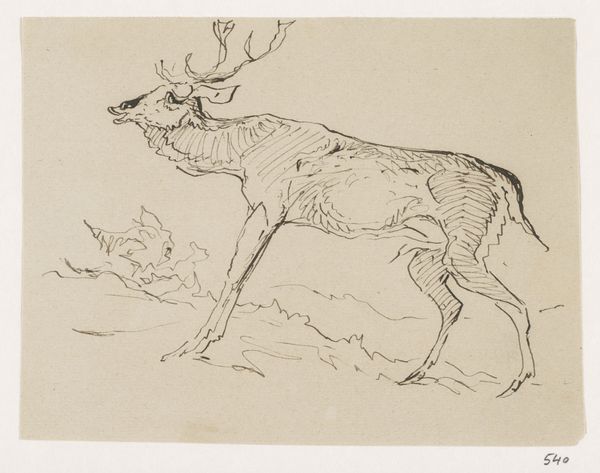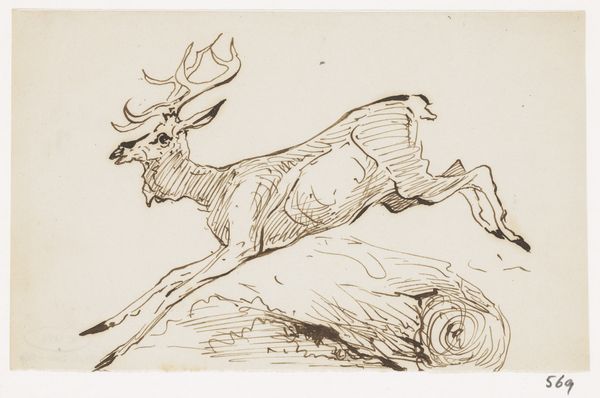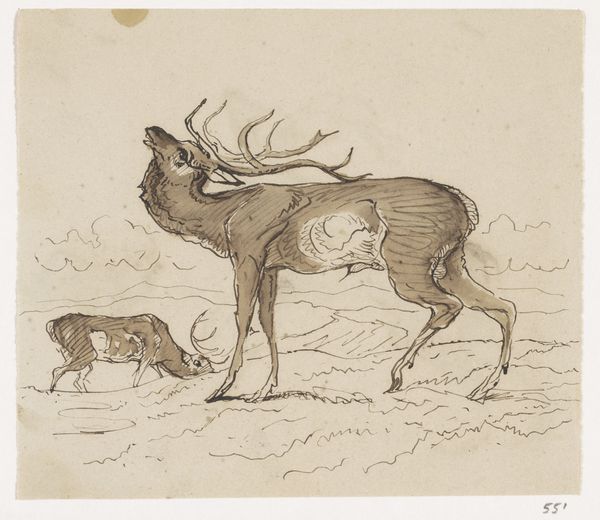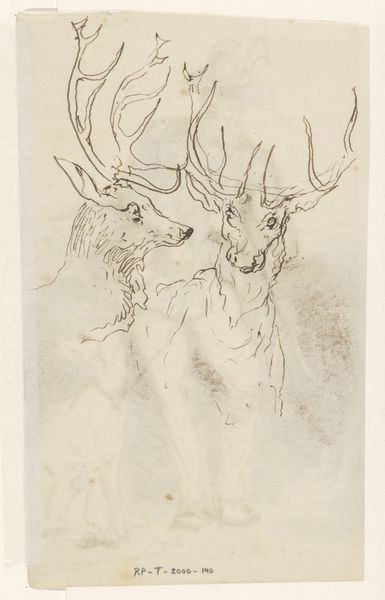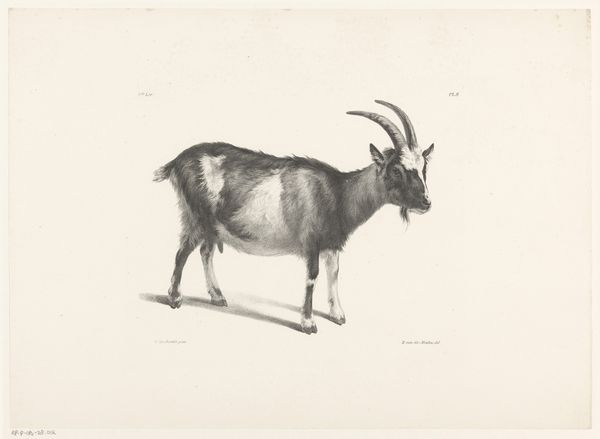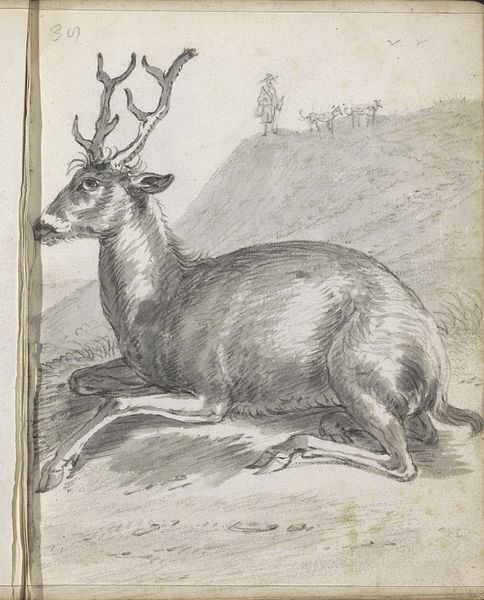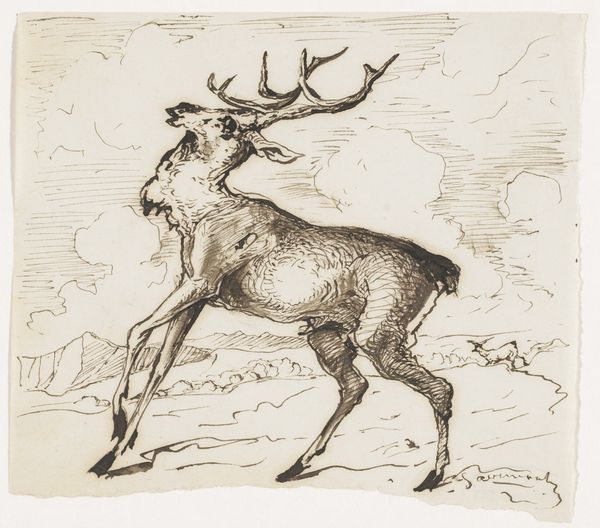
paper, ink
#
asian-art
#
landscape
#
japan
#
figuration
#
paper
#
ink
#
realism
Dimensions: 44 3/4 x 11 1/8 in. (113.67 x 28.26 cm)
Copyright: Public Domain
"Stag" was painted by Mori Tetsuzan with ink on paper. Tetsuzan lived during the Edo period, a time marked by relative peace, but also rigid social stratification in Japan. Here, a stag is depicted from behind, its gaze directed upward and away. The delicacy with which the animal is painted is heightened by the stark whiteness of the background, and the seemingly weightless quality of the ink. The stag embodies a sense of refined elegance, a valued aesthetic during the Edo period. Deer in Japanese art often carry symbolic weight, representing longevity and prosperity. "Stag" is no exception. The animal embodies both a physical and spiritual grace, an ideal to aspire to in a hierarchical society. Tetsuzan creates a space where the natural and the ideal converge, reflecting an individual's search for harmony and status within a structured world.
Comments
minneapolisinstituteofart almost 2 years ago
⋮
The Chinese believe that deer live for hundreds of years and thus use them as symbols of longevity. In traditional pharmacology, powdered stag horn can be used as a restorative medicine or even an aphrodisiac. The Japanese consider deer to be messengers of gods and as such keep them within shrine precincts. The artist, Mori Tetsuzan, was adopted by his uncle, Mori Sosen, Japan's most famous painter of monkeys. He was also a pupil of Maruyama O_kyo, founder of the Maruyama School and champion of a new naturalistic style.
Join the conversation
Join millions of artists and users on Artera today and experience the ultimate creative platform.
